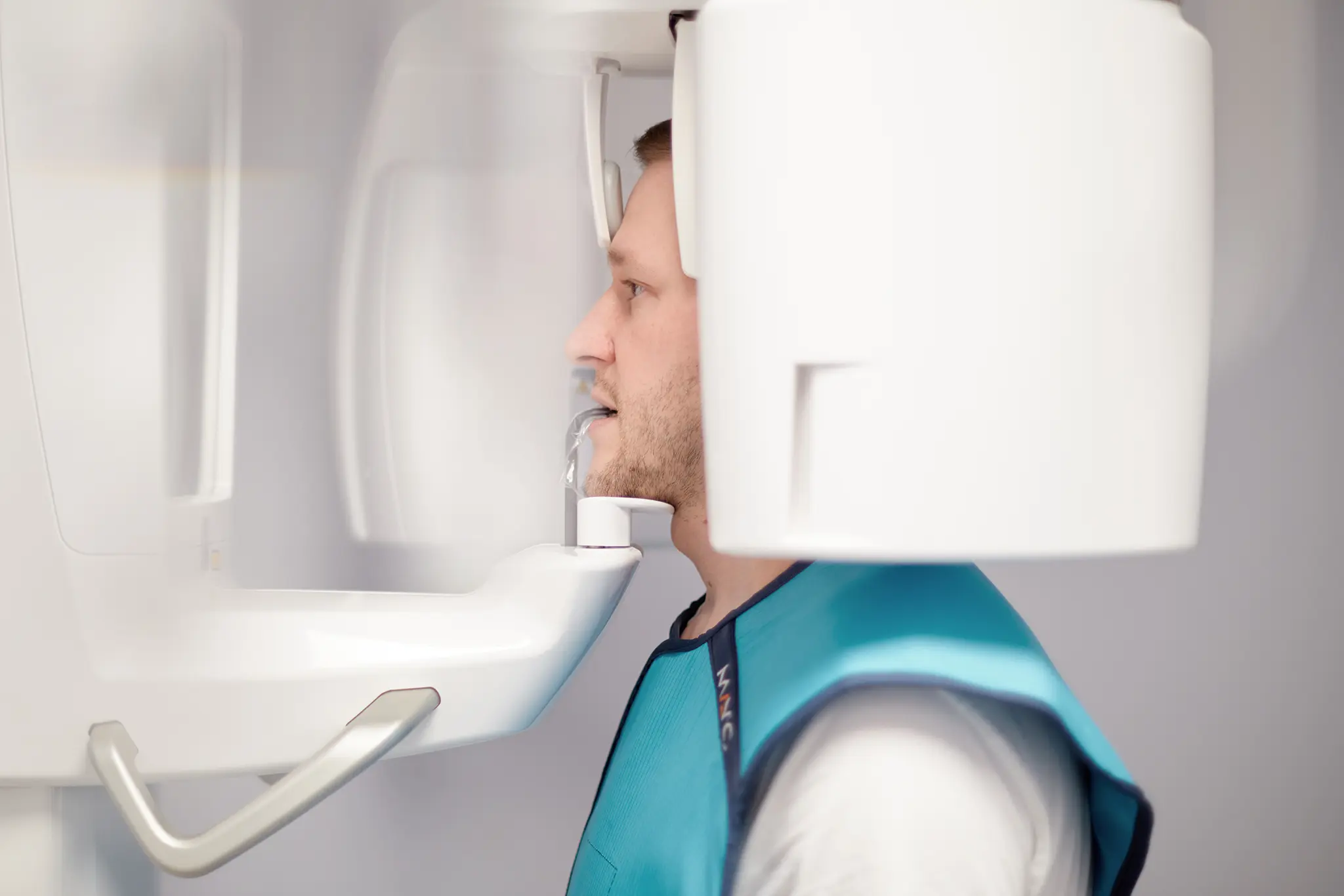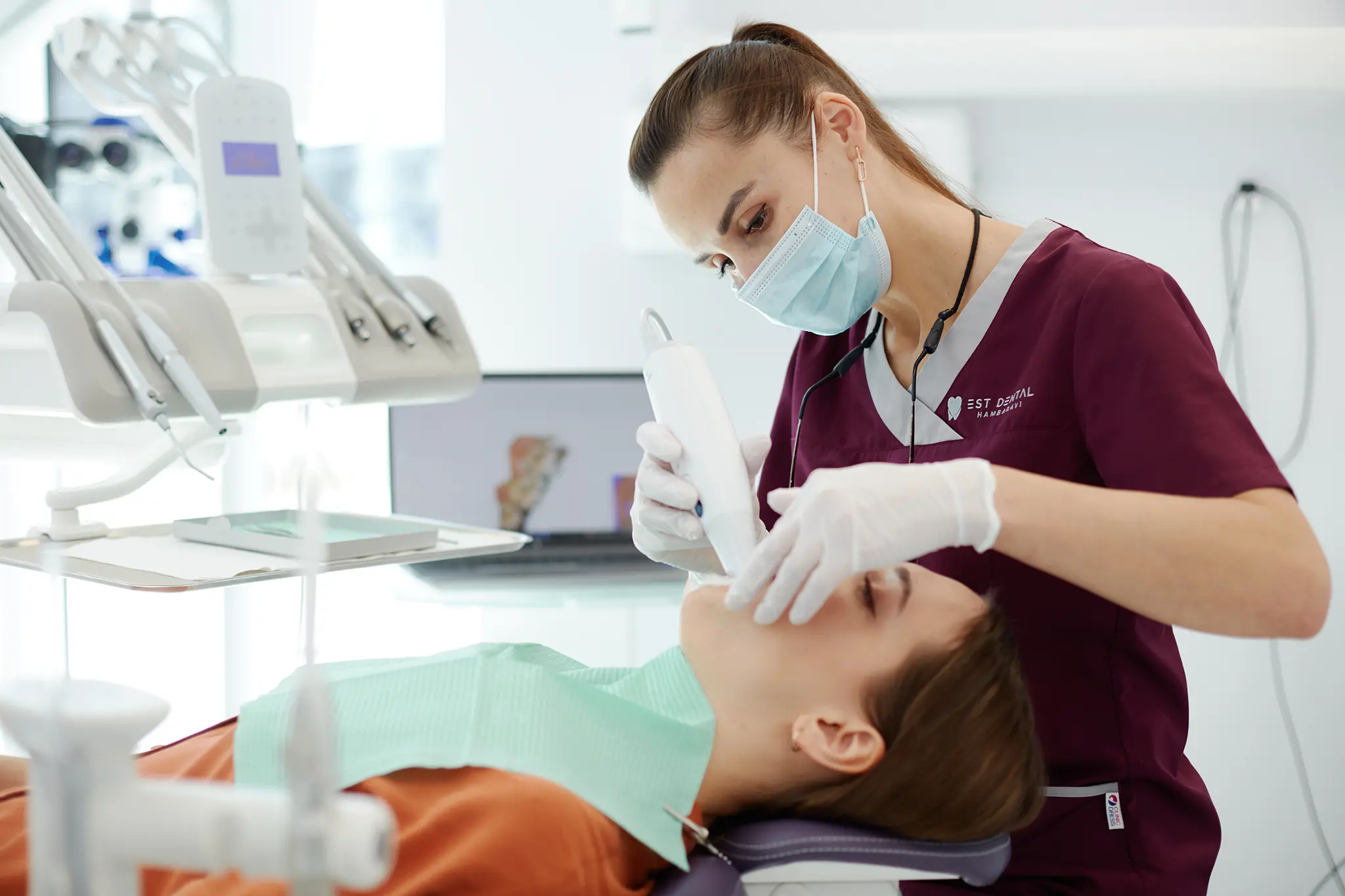In dentistry, thorough diagnostics
is the key to proper treatment, work scheduling, and the desired result.
Diagnostics in dentistry plays a very important role in understanding the status of the oral cavity, identifying issues in a timely manner, and making the right decision regarding the treatment plan. Issues and diseases affecting the oral cavity are rarely that evident. Diagnostics include various types of dental examinations to collect the required information regarding the health status of teeth and surrounding tissues.

What is diagnostics in dentistry for?
The concept of diagnostics in dentistry covers all studies performed by a dentist to assess the status of the oral cavity, including that of teeth, gums, and their surrounding structures. Through diagnostics, any emerging problems and diseases affecting the teeth and gums are identifiable at an early stage. After that, the information obtained provides a basis for an individual treatment plan drawn for each patient. Let us talk about what tools and research methods dentists use in their daily practice.
Radio diagnosis
Radio diagnosis (or X-ray diagnostics) uses radiation methods to study and detect diseases of the oral cavity. Now, 2D and 3D (CBCT) diagnostics are available. Using these research methods, the dentist can detect dental cavities, radicular cysts, root inflammation, cracks in the teeth, any absent tooth rudiment, bone fractures, lesions, and displaced joints. X-ray diagnostics contributes to assessing the quality of previous dental treatment and comparing the results of treatment over time.
Photographic documentation
In dentistry, photos are required to document the case. The dentist uses them to definitely and visually inform the patient on what issues in the oral cavity he/she has. In addition, photos play an important role in prosthetics. Photos help the dental clinic in transmitting the required information about the color and shape of the teeth to the dental laboratory.
Diagnostic models and evaluation
In addition to photo documentation and radio diagnosis, extensive dental treatment requires casts or digital scanning of the teeth at the first visit to make individual models of the patient’s teeth. With the models, the dentist can analyze the bite and the ratio between teeth, as well as evaluate multiple other key aspects.
Once all diagnostic parameters are evaluated, the dentist will draw up an individual treatment plan for the patient. The plan is accompanied by describing existing problems in the patient and discussing the required treatment and expected results.



Introduction to the treatment plan
When discussing a treatment plan, the dentist talks to the patient about his/her oral problems and possible solutions. The patient’s expectations, the desired result, the cost of treatment, and the time frame of the work are also discussed. The cost may vary slightly during the treatment course, depending on the circumstances that may arise. The dentist will emphasize the importance of daily care, as well as the importance of the doctor/patient joint effort.
Role of diagnostics in dentistry
In dentistry, thorough diagnostics help to reveal problems at an early stage and to draw up a personal treatment plan for each patient. When an issue is detected promptly, your teeth are curable in time without any complications.
At the EstDental Hambaravi dental clinic located in the center of Tallinn, dentists will help you assess your oral status and choose the right treatment through thorough diagnostics. Based on the data obtained during the examination, radio diagnosis, diagnostic models evaluation, and photos, the dentist will help to choose the best individual treatment plan for each patient. Correct and thorough diagnostics pave the path to your beautiful and healthy smile!
Sign up for a consultation and dental checkup at the EstDental Hambaravi dental clinic located in the center of Tallinn. Feel free to contact us.
Book an appointment












